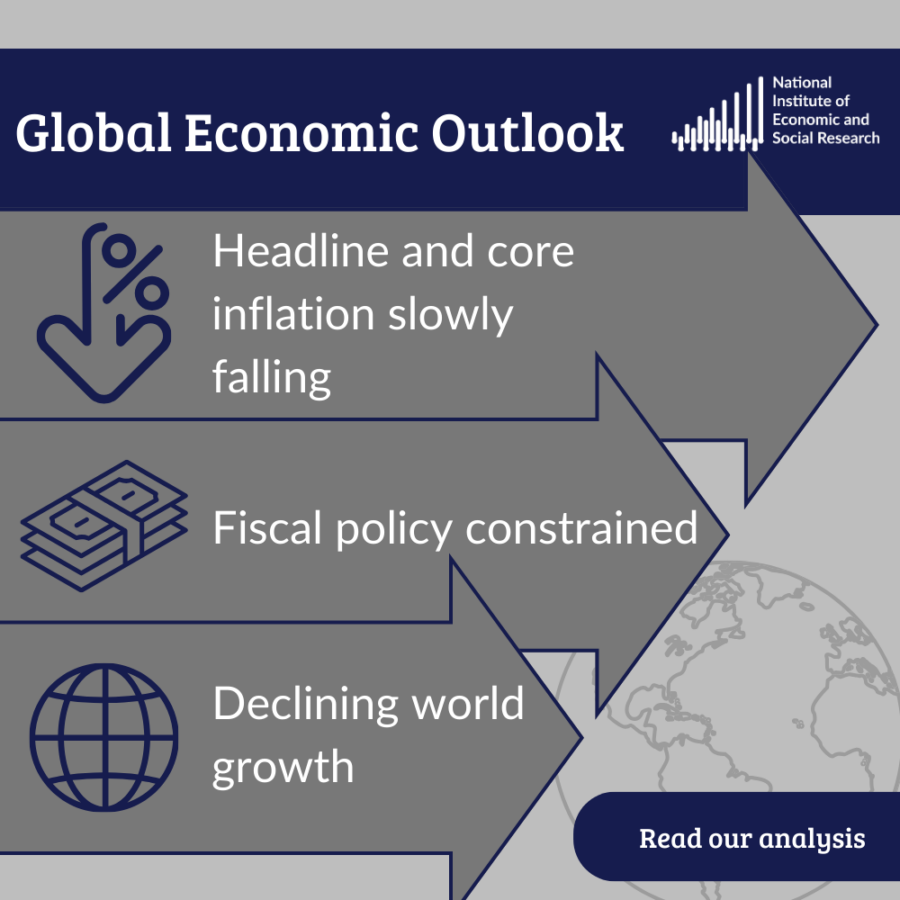Stuttering Global Growth
Global GDP growth is expected to slow to 3 per cent in 2023 from 3.5 per cent in 2022, although we have revised up our forecast due to a stronger than expected start to the year. The pace of growth is not strong, and we expect that weakness to persist into 2024 as the lagged effects of monetary policy tightening in the advanced economies continue to work through.
Sign in to Access Pub. Date
Pub. Date
08 November, 2023
 Pub. Type
Pub. Type

Main points
- GDP growth at close to 3 per cent in both 2023 and 2024 contains potential risks of recessions in some countries. The Euro Area has stagnated with almost zero growth for three consecutive quarters, and Germany, its largest economy, has experienced a substantial decline in GDP during this time. The pace of quarterly GDP growth in the United States is also likely to fall back in the final quarter of the year. Beyond these major advanced economies, the outlook appears stronger, though it is still surrounded by uncertainty.
- In major advanced economies, annual inflation rates have now fallen sustainably, mainly due to reduced price pressures from energy and food prices and supply chain problems, and the effects of rapid monetary policy tightening. However, underlying inflation has not fallen as markedly as headline inflation and inflation rates remain well above target rates in the leading advanced economies.
- While the peaks in headline inflation in the major advanced economies have now passed, the more stubborn underlying or ‘core’ inflation remains an issue for monetary authorities. Energy and related commodity prices have fallen substantially from their peaks, offering the prospect of lower headline inflation. But the risk is that core inflation will prove more persistent.
- We forecast that OECD annual inflation will continue to fall from 9.5 per cent in 2023 to 5.7 per cent in 2024 and 3.8 per cent in 2025. This is expected due to the impact of lower oil and commodity prices combined with sluggish economic activity.
- We expect that a sustained fall in inflation (especially in underlying inflation) and weak GDP growth will provide a backdrop to falling policy interest rates in late 2024 and 2025. As a result, we expect global output growth in 2025 to be slightly stronger than in either 2023 or 2024. We think that the Federal Reserve (Fed) and the European Central Bank (ECB) have reached their peak interest rates at 5.5 per cent and 4.5 per cent, respectively. However, central banks will remain cautious of financial instability risks as higher interest rates hit borrowers.
- Although public debt-to-GDP ratios have declined since 2021, rising bond yields put pressure on fiscal balances in advanced economies. High inflation has helped advanced economies to reduce their public debt relative to GDP. However, long term bond yields reaching their highest level since the global financial crisis leaves little room for policy action in 2024 and 2025. We expect advanced economies to cut their budget deficits further in the medium term.






















